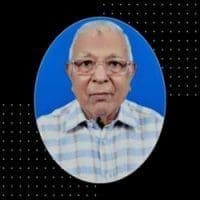Mr. Muntazir Ahmed has five decades of experience in knitting technology. He is not only a professional but he also has a great experience of teaching since five decades. He has been associated with S.N.D.T Women’s University for a very long time and is one of the most experienced and respected teachers there. He decided to pursue a career in knitting when this concept was little less popular than today. He was fortunate enough to learn and polish his skills and knowledge from David J. Spencer.
Mr. Muntazir Ahmed has five decades of experience in knitting technology. He is not only a professional but he also has a great experience of teaching since five decades. He has been associated with S.N.D.T Women’s University for a very long time and is one of the most experienced and respected teachers there. He decided to pursue a career in knitting when this concept was little less popular than today. He was fortunate enough to learn and polish his skills and knowledge from David J. Spencer.
Tell us about your educational journey.
After completing school education from UP Board Allahabad, I obtained a B.Sc degree (Physics, Chemistry, Mathematics) from Agra University followed by B.Tex (Textile Technology) from Kanpur University. Finally I attended a special programme in Knitting Technology at Leicester Polytechnic presently De Montfort University UK.
How was your learning experience?
David J. Spencer, C Text, FTI, ACFI, the author of popular book Knitting Technology was a Senior Lecturer in the School of Textile and Knitwear Technology at Leicester Polytechnic, UK. He had been an examiner and moderator in the Manufacture of Hosiery and Knitted Goods for the City and Guilds of London Institute. He had written articles on knitting technology for British, American and German technical publications. My early industrial experience was obtained through technical service at the different Departments of Corahs the large Leicester based Knitting company.
I studied various aspects of Knitting Technology and the learning outcome obtained from all the faculty members was the insight of basic knowledge and advances of the topics concerned. They were a great source of inspiration and I give due credits to them for what I have gained today.
How did you carve your professional life?
I started my professional career from Muir Mills, Kanpur in the Department of Carding and Spinning as Carding assistant in 1968. Then, I was appointed as Assistant Cotton Technologist by UP government and posted at Government Cotton Research Station, Bulandsher, UP in 1971. I appeared and passed ARS examination conducted by ICAR in 1975 and got posted as Scientist at Central Institute for Research on Cotton Technology, Matunga, Mumbai. During my research career, I worked at different responsibilities and finally retired in 2007 as Principal Scientist and Head Mechanical Processing Division at ICAR CIRCOT, Mumbai. I have been contributing as visiting faculty to various Textile Colleges in and out of Mumbai.
Pursuing (learning) knitting in the time when handloom was dominant wasn’t an easy decision. What inspired you?
Knitting and handloom are two independent technologies. I had travelled to UK under a government scheme to acquire sufficient knowledge in Knitting so that systematic research work can be started in this area after coming back to my country.
What changes according to you are required in the education system for textiles?
Enough time must be devoted to upskill the basic technology; followed by thorough practical study. Project work should be discontinued and this project time must be utilized for industrial training where the entire department of the industry should be covered.
What message do you have for young textiles aspirants?
You definitely need to have a lot of knowledge about the field you are pursuing your career in. But for a successful career in textiles, one should know the fundamental or basic element of textiles. One should know at least the basic fabric structure, construction, technicalities and types. Apart from the knowledge in textiles, you also need to be honest with your choice and career and need to work on it with all your dedication.
What are the problems faced by people in the textile industry?
For the last several years I have not been in touch with the textile industry. However, timely upgradation of technology and appropriate use of newer fibres may be helpful to the industry.
What do you foresee for the knitting industry?
The future of the knitting industry is bright provided the industry adopts the following progressive steps.
Present focus to use elastic yarn is expected to continue and expand in future.
- Higher speed factor to increase productivity.
- Central quality setting for fabric loop uniformity.
- Fault detection during knitting for minimizing fabric faults.
- Higher feed density for higher productivity.
- Lower feed density for minimizing spirality.
- High machine for continuous knitting for a longer time.
- Semi positive feed for flexibility of machine.
Are you aware about the recent advancements in knitting technology? What difference do you see in knitting technology then and now?
Few of the recent emerging advances are mentioned above and other innovations are listed below.
• Positive take down
• Open width take down
• Gauge change facility in circular and flat machines
• Knitting to shape and Integral Knitting
• Large diameter
• Smaller latch length
• Filter creel
- Positive and storage feeders
• Striper feeder
• Electronic feeder
• Needle selection as cylinder and dial
• Super fine gauge
• More number of systems
• Comb take down
• Holding down sinkers
At that time knitting was considered a worldwide craft involving hand knitting pins and hand control machines for the production of sweaters, socks, shawl and fabrics for inner garments etc. As a result of new developments today, it is a method of textile production by which both the products and machines are highly diverse and versatile. Products are full fashioned and integral garments, all types of hosiery, piece goods, nets, pile fabrics and technical textiles etc.

